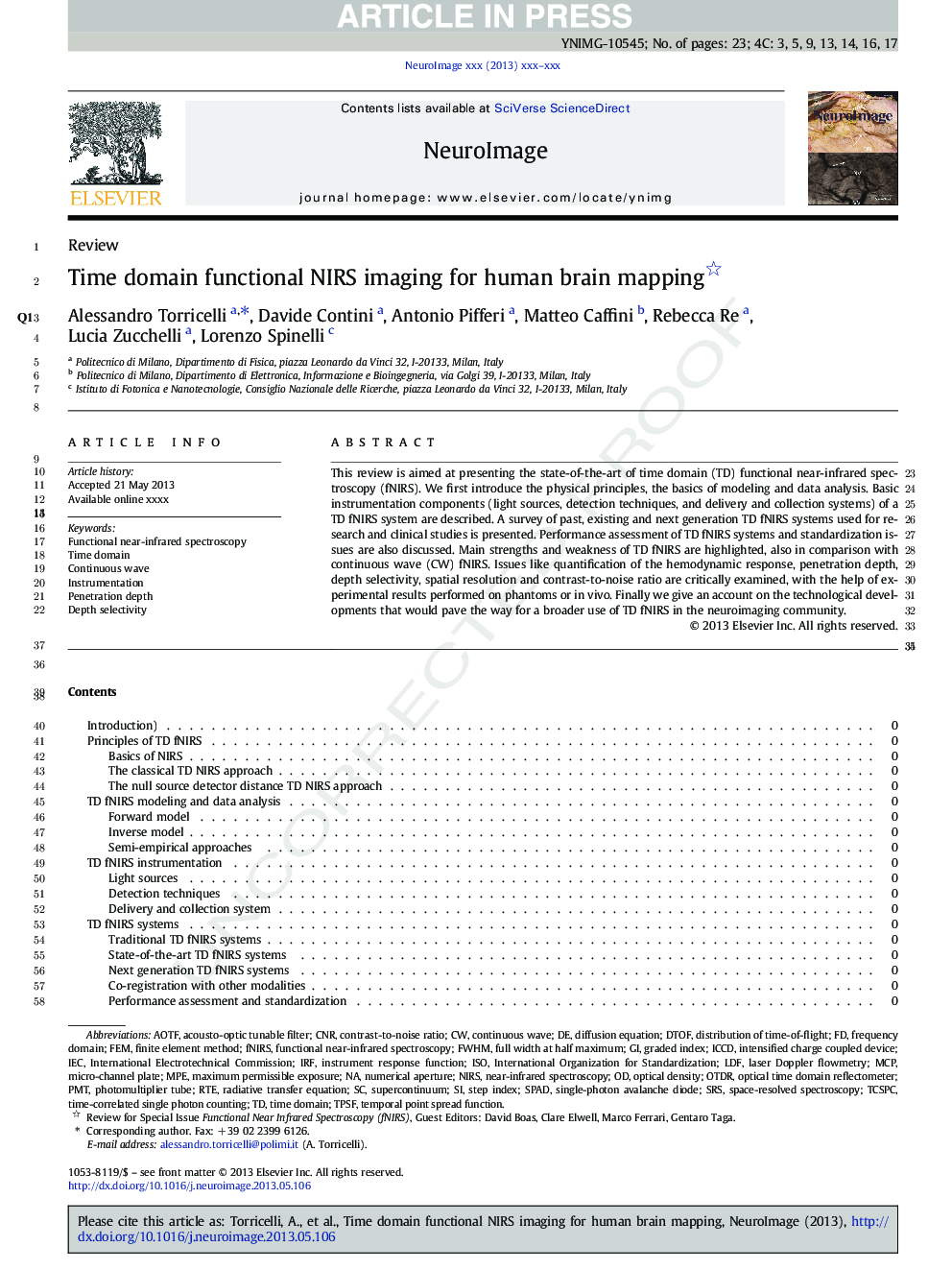| Article ID | Journal | Published Year | Pages | File Type |
|---|---|---|---|---|
| 6028756 | NeuroImage | 2014 | 23 Pages |
Abstract
This review is aimed at presenting the state-of-the-art of time domain (TD) functional near-infrared spectroscopy (fNIRS). We first introduce the physical principles, the basics of modeling and data analysis. Basic instrumentation components (light sources, detection techniques, and delivery and collection systems) of a TD fNIRS system are described. A survey of past, existing and next generation TD fNIRS systems used for research and clinical studies is presented. Performance assessment of TD fNIRS systems and standardization issues are also discussed. Main strengths and weakness of TD fNIRS are highlighted, also in comparison with continuous wave (CW) fNIRS. Issues like quantification of the hemodynamic response, penetration depth, depth selectivity, spatial resolution and contrast-to-noise ratio are critically examined, with the help of experimental results performed on phantoms or in vivo. Finally we give an account on the technological developments that would pave the way for a broader use of TD fNIRS in the neuroimaging community.
Keywords
OTDRPMTLDFfNIRSSRSCNRFWHMRTENIRSIRFSPADSingle-photon avalanche diodeTCSPCMPEAOTFICCDMCPSupercontinuumISOInstrument response functionTime domainFrequency domainintensified charge coupled devicenumerical apertureFinite element methodInternational Organization for StandardizationGraded indexTime-correlated single photon countingMicro-channel plateFunctional near-infrared spectroscopyNear-infrared spectroscopyfull width at half maximumPenetration depthlaser Doppler flowmetryAcousto-optic Tunable Filterphotomultiplier tubeRadiative transfer equationDiffusion equationInstrumentationcontinuous waveContrast-to-noise ratioFEMoptical densityInternational Electrotechnical CommissionIEC
Related Topics
Life Sciences
Neuroscience
Cognitive Neuroscience
Authors
Alessandro Torricelli, Davide Contini, Antonio Pifferi, Matteo Caffini, Rebecca Re, Lucia Zucchelli, Lorenzo Spinelli,
